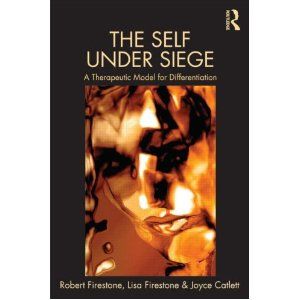Self-Talk
How to Identify Your Critical Inner Voice
Overcoming that internal critic we all possess
Posted January 23, 2013
You don’t have to look far to find your critical inner voice. It’s there when you go to a job interview: “Why are you wasting your time? The other applicants are more qualified for this job.” It’s there when you express a point of view, “You idiot, why did you say that? Now everyone will think you are stupid.” It’s there when you make a mistake, “Can’t you do anything right? You are embarrassing yourself!”
The critical inner voice reveals itself in those little everyday thoughts that flit through our consciousness. They zing us and are gone before we are even fully aware of them. These thoughts are part of a menacing internal dialogue, a harsh and judgmental way that we talk to ourselves. Though sometimes hard to pinpoint, the inner voice is often experienced as a running commentary that attacks and criticizes our actions and interactions in everyday life. Unfortunately, this destructive thought process influences us to make decisions that are against our best interests and to take actions that negatively impact our lives. In order to challenge this internal enemy, you must be able to identify your critical inner voice. Once you have become aware of its negative guidance, you can make a conscious effort to not act on its destructive advice.
So how do you uncover this internal enemy, which is hidden among your more objective and realistic views and reactions? The trick is to separate it from the thoughts and feelings that represent your own point of view. One of the reasons that it is difficult to distinguish the attacks of the voice is because they are experienced in the first person; the same as all of your other thoughts. However, you can access this alien point of view by putting it in the second person. To do this, take your self-attacks from the first person (“I” statements) and put them into the second person (“you” statements).
The exercise below will enable you state the critical inner voice in the second person and thus reveal the hostile nature of this internal enemy. It will help you make a distinction between the negative point of view of yourself and a more realistic view. It will also make you aware of other negative thoughts that you may not have been conscious of before. With this simple exercise you will be able to access the feelings that often underlie these self-attacks, allowing you to have a more compassionate view of yourself.
Exercise Part 1: Identifying your critical inner voice:
Take a piece of paper and divide the page in half by drawing a line down the middle from top to bottom. On the left side of the page, record any negative thoughts that you have had toward yourself recently (ie: I am so lazy lately). Now on the right side of the page, translate these same statements into the second person (ie: You are so lazy lately)
Read over the negative statements on the right; it is helpful to read them out loud. Do you get the feeling that someone else is talking to you? Do you detect an unfriendly tone? One that is snide, sarcastic or hostile? Do these negative statements trigger more attacks? If so, write them down, but be sure to write them in the second person on the right side of the page. How do you feel hearing these attacks?
Exercise Part 2: Separating from your critical inner voice:
Take another piece of paper and place it along the right side of the first one. On this new page, next to each voice attack, try to express a realistic and impartial view of yourself, your qualities, and your reactions. What would a compassionate friend or an objective observer say or see about you in relation to the voice attack? Make sure to state this point of view in the first person (“I” statements). This is not meant to be an exercise where you buoy yourself up with self-affirming proclamations, but rather where you view yourself with an objective but kind attitude. You are seeing yourself through your own eyes, as you really are, not distorted by the filter of your critical inner voice.
It is advisable to take time regularly to investigate your critical inner voice attacks. Follow up with this exercise, by writing down your specific self-hating thoughts, always in the second person, and responding to them with a rational, more compassionate and realistic point of view, written in the first person.
Read more from Dr. Lisa Firestone on the Critical Inner Voice at PsychAlive.org.
Watch Dr. Lisa Firestone's online video explaining the Critical Inner Voice.
See Dr. Lisa Firestone's latest book, The Self Under Siege



